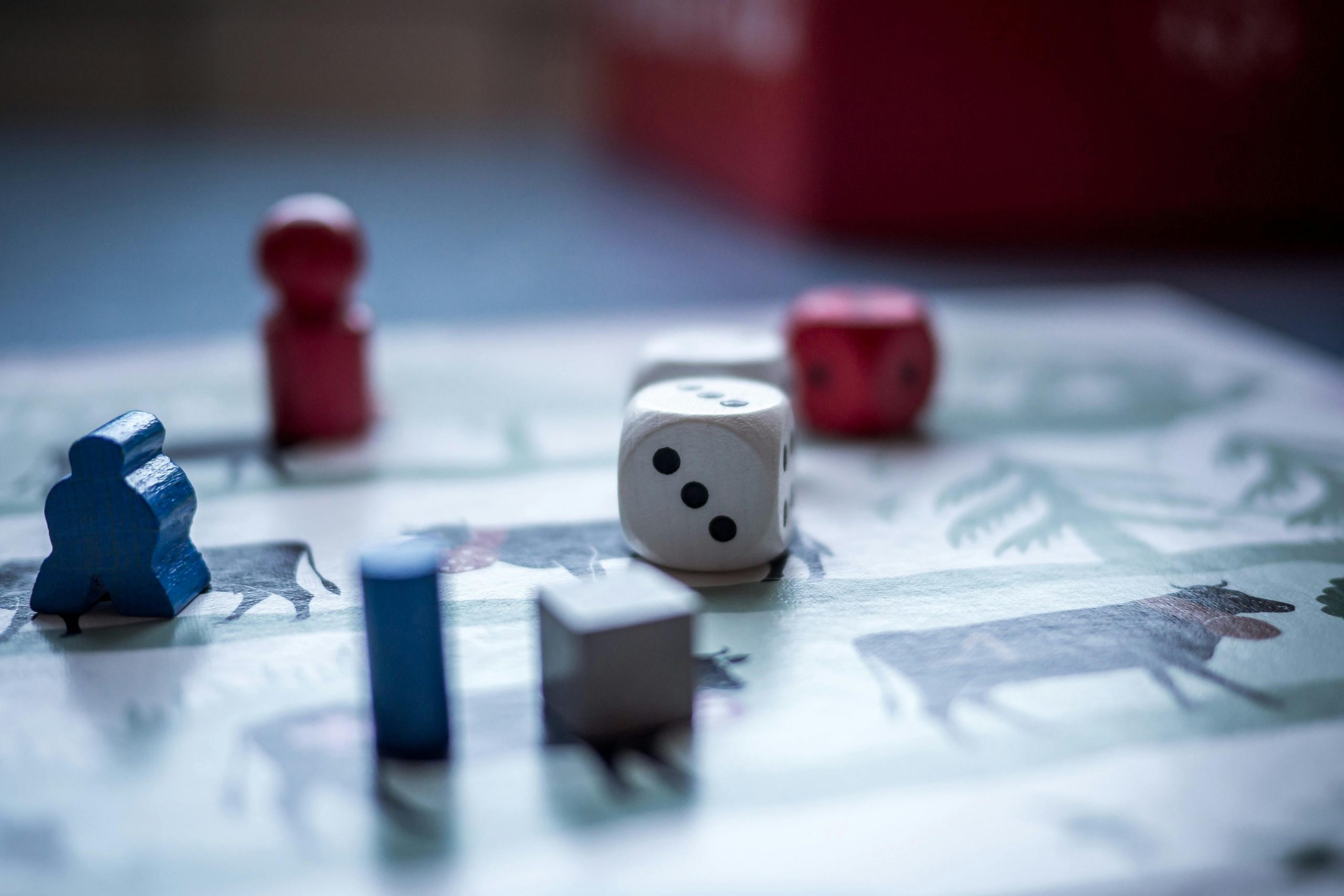Game night is more than just entertainment—it’s a tradition, a bonding ritual, and sometimes, a full-blown battle for bragging rights. If your family thrives on a little friendly competition, you know that some games turn the kitchen table into a high-stakes arena of strategy, skill, and luck. But which games actually deliver the right balance of fun and rivalry?
In this post, we’re diving into fun family board games that bring out everyone’s competitive side. These games spark debates, dramatic comebacks, and victory dances—perfect for families who love a good showdown.
What Makes a Board Game Fun and Competitive?
Before we dive into the list, let’s talk about what separates a truly competitive family board game from one that just fills time.
Here’s what to look for:
- Clear goals: Whether it’s earning the most money, reaching a finish line, or taking over territory, a game with a solid win condition fuels motivation.
- Balanced gameplay: Games that offer chances for underdogs to catch up or block leaders keep everyone invested until the end.
- A mix of strategy and luck: Too much luck feels random. Too much strategy can frustrate younger players. The best competitive games walk the line.
- Player interaction: Games that encourage stealing, blocking, or trading create moments worth remembering.
Now let’s get to the games that check all these boxes—and then some.
1. Ticket to Ride: Compete for Routes, Cities, and Glory

If your family loves strategy but wants to skip a steep learning curve, Ticket to Ride is a fantastic pick.
Why it’s competitive:
- Every player races to complete train routes across a map.
- Blocking another player’s route is legal—and satisfying.
- Points are hidden until the end, so the winner is never obvious.
Family-friendly bonus: The rules are easy to grasp, even for kids 8 and up, but the game still feels intense as maps fill up.
2. Monopoly Junior: Classic Competition for the Younger Crowd
Even the youngest family members can get a taste of competition with Monopoly Junior. It’s a simplified, faster version of the classic Monopoly game—and it still stings when someone lands on your property.
What makes it competitive:
- Players buy properties and charge rent, just like the original.
- Budgeting, decision-making, and a little bit of luck come into play.
- Game time is shorter, so kids stay focused and engaged.
Why families love it: It’s a great way to introduce competition, basic money skills, and game structure without overwhelming young players.
3. Uno: Card-Based Chaos That Keeps Everyone on Their Toes
Yes, it’s technically a card game—but Uno earns a spot here because it’s one of the most beloved family games for fast-paced, competitive fun.
Key competitive elements:
- Everyone has the power to reverse, skip, or punish opponents.
- It’s easy to gang up on the leader—or suddenly become the target.
- A single “Draw Four” can change everything.
Good to know: It’s suitable for players as young as 6, but older siblings and parents won’t get bored either.
4. Catan (formerly Settlers of Catan): Trade, Build, and Outsmart the Competition
When your kids are a bit older and ready for more strategic gameplay, Catan delivers a deeply competitive experience. It’s all about building settlements, collecting resources, and cutting smart deals.
Why Catan heats up family night:
- Players race to 10 victory points using various strategies.
- Trading introduces negotiation and manipulation (in a fun way).
- You can block roads, monopolize resources, or claim key territories.
Tip: The base game is best for ages 10+, but younger players may do well with a bit of help.
5. Sorry!: Simple Rules, Ruthless Moves
Don’t be fooled by the bright colors and easy mechanics—Sorry! is one of the most cutthroat family games on the shelf.
What keeps it competitive:
- You send other players’ pawns back to the start.
- There’s constant back-and-forth and revenge plotting.
- Luck plays a role, but strategic positioning matters too.
Great for mixed ages: Kids can play independently by age 6, but even teens and adults stay hooked by the game’s “take that!” moments.
6. Blokus: Think Tetris, But With a Battle for Space
Blokus combines spatial reasoning with strategic placement, and the end result is a puzzle-like game that quickly becomes a battle for territory.
Why Blokus is perfect for competitive families:
- Players fight for space on the same board.
- Each move affects the options your opponents have.
- The game rewards both offense and defense.
Bonus: It’s fast-paced and non-verbal—perfect when you want a change from wordy games or long instructions.
7. Clue: Who Can Solve the Mystery First?
Clue (or Cluedo, depending on your region) blends deduction, bluffing, and competitive sleuthing. It’s a mystery game where being right—and being fast—makes all the difference.
How it gets competitive:
- Everyone races to solve the same mystery.
- You can mislead or manipulate other players’ deductions.
- One false accusation can cost you the game.
Best for ages 8+, Clue is a great way to get the family thinking—and scheming.
8. Connect 4: Fast-Paced One-on-One Rivalry
Connect 4 is a head-to-head showdown that proves how simple rules can still lead to dramatic wins and crushing defeats.
Competitive features:
- Real-time reactions matter.
- Strategy builds fast as the grid fills.
- You can win in seconds—or lose to a surprise move.
Why it works: It’s quick enough for repeat rounds and easy to turn into a tournament-style faceoff.
9. Jenga: Physical Skill Meets Competitive Tension

Jenga may not involve dice or cards, but it brings a different kind of intensity. Every move builds the pressure—literally.
What fuels the rivalry:
- Everyone is waiting for someone to fail.
- There’s a mix of skill, nerves, and psychological pressure.
- Kids can often outplay adults thanks to smaller, steadier hands.
Fun twist: Keep a score chart and make it a best-of-three tournament for more drama.
10. The Game of Life: High-Stakes Choices with a Twist of Fate
In The Game of Life, players move through careers, marriage, kids, and retirement—but don’t let the light-hearted theme fool you. Underneath is a surprisingly competitive experience.
Why families keep coming back to it:
- Every choice has long-term consequences.
- The richest player doesn’t always win—making every decision count.
- Rivalries emerge naturally as players race to the best milestones.
Good for ages 8 and up, this classic combines luck and long-term planning in a way that gets families talking, teasing, and celebrating.
Tips for Managing Competitive Family Game Nights
If your family leans toward the competitive side, that’s not a bad thing—it means people are engaged and passionate. Still, it’s important to strike a balance so that fun stays front and center and no one walks away from the table upset. Here are some practical ways to keep things friendly while still embracing the thrill of competition:
1. Set Expectations Early
Before the first die is rolled or the first card is drawn, have a quick chat about the purpose of game night. Remind everyone that:
- Winning is great, but enjoying the time together matters more.
- Gloating or taunting should stay playful—not personal.
- It’s okay to feel disappointed when you lose—but don’t take it out on others.
If you have younger kids, model good sportsmanship yourself. Clap when others win, shake hands after a game, and show how to lose with grace. These behaviors shape how kids will handle competition in other areas of life, too.
2. Rotate Game Types to Keep It Fair
Sticking with just one type of game can give some family members an edge. If your teen dominates every strategy game or your youngest always gets lucky with dice rolls, it can wear on the group. Try mixing things up like this:
- Strategy-heavy games (like Catan or Ticket to Ride) reward planning and long-term thinking.
- Chance-based games (like Sorry! or Uno) give everyone a fair shot, regardless of age or skill.
- Physical or dexterity games (like Jenga or Twister) introduce a fun, silly element that levels the playing field.
This variety keeps everyone engaged and ensures that everyone gets their moment to shine.
3. Encourage Rematches and Role Swaps
Letting someone request a rematch—especially after a rough loss—can turn disappointment into determination. It also extends game night without forcing everyone into another full round if they’re not interested.
Another fun twist: switch up roles or seating. In games where starting position matters, rotate who goes first each time. You can also create little “challenges” like:
- Playing with your non-dominant hand (for dexterity games).
- Swapping partners in team-based games.
- Using a timer to speed up decision-making.
These variations keep the energy up and the mood light.
4. Try Team Play to Mix Up the Dynamics
Many competitive board games can be adapted for team play—even if the original rules don’t include that format. This can ease the pressure on individual players and create new, unexpected alliances.
Benefits of team play include:
- Shared wins and losses reduce the sting of defeat.
- Older players can help younger ones, making the experience more inclusive.
- Strategic collaboration adds a fun new layer to familiar games.
Games like Codenames, Pictionary, and Charades are naturally team-based, but even strategy games like Catan or Ticket to Ride can be played in pairs with some light rule adjustments.
Looking for New and Fun Family Board Games?
Let’s be honest—some families have played Monopoly, Clue, and Scrabble so many times, they could play in their sleep. If you’re looking to shake things up with new titles that still deliver a competitive punch, here are four lesser-known gems that deserve a spot on your shelf:
1. Kingdomino
A quick-playing, tile-placement game where players build kingdoms from matching terrain types.
- Why it’s competitive: You’re not just building your own kingdom—you’re also blocking opponents from grabbing the best tiles.
- Age range: 8 and up
- Play time: Around 15-20 minutes
- Best for: Families who love strategy but want a shorter, simpler game.
2. Camel Up
A chaotic camel racing game where players bet on which camel will win—or lose.
- Why it’s competitive: You can manipulate the race by stacking camels, placing obstacles, and bluffing your bets.
- Age range: 7 and up
- Play time: 30-45 minutes
- Best for: Families who enjoy unpredictable outcomes and a good laugh.
3. Sushi Go!
A fast-paced card drafting game where players compete to create the best meal combo.
- Why it’s competitive: Every card choice matters, and you have to anticipate what others will pick next.
- Age range: 8 and up
- Play time: About 20 minutes
- Best for: Quick thinkers who love food-themed fun and light strategy.
4. Qwirkle
A pattern-matching game that blends visual planning and tactical blocking.
- Why it’s competitive: You can build off your opponents’ plays and block their high-scoring moves.
- Age range: 6 and up
- Play time: 30-45 minutes
- Best for: Families who like games that are easy to learn but hard to master.
These games may not have the same name recognition as the classics, but they’re packed with personality, replayability, and just the right amount of tension. Whether you’re building a kingdom, stacking camels, or trying to score a perfect sushi roll, you’ll find plenty of fuel for your family’s competitive spirit.
Let the Games Begin!
Not all board games are created equal. Some are gentle and cooperative. Others? They’re a battle royale in a cardboard box.
If your family gets a kick out of competition, these games will have everyone plotting, racing, and occasionally gloating their way to victory. And when you find that perfect mix of trash talk, strategy, and laughter—you know you’ve hit game night gold.
So clear the table, grab the snacks, and prepare for game night to get just a little intense. After all, nothing says family bonding like a hard-earned win in Monopoly Junior or a last-second block in Blokus.



